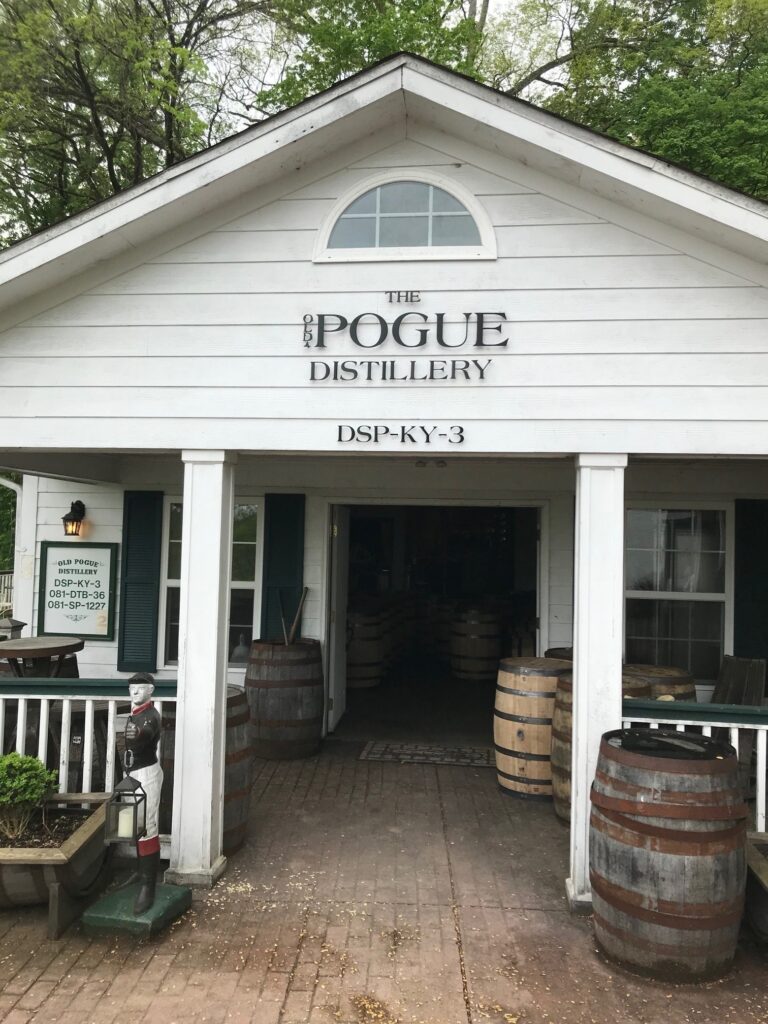Maysville, Kentucky: The Whiskey Gateway of the Ohio River
Maysville, Kentucky, holds a special place in American whiskey history. Nestled on the banks of the Ohio River, this small town played an outsized role in the transportation, trade, and expansion of bourbon during the 19th century. Before railroads crisscrossed the country, rivers were the highways of commerce, and Maysville was one of the most important ports for shipping Kentucky whiskey to a thirsty nation. It is the home of Old Pogue Distillery today. Maysville also has a whiskey exhibit downtown in their museum emphasizing Old Pogue’s history in the area.
Whiskey and the Early Days of Maysville
Maysville was one of Kentucky’s earliest settlements, known initially as Limestone due to the limestone cliffs that lined the riverbanks. This geographical feature would prove crucial for its natural beauty, and limestone-rich water is vital for making great bourbon. The water’s high calcium content and low iron levels made it perfect for distilling whiskey, a fact that Kentucky distillers took full advantage of.
As settlers moved westward in the late 18th and early 19th centuries, whiskey became one of Kentucky’s most valuable commodities. Distilleries in the Bluegrass region and beyond needed a way to get their product to market. That’s where Maysville came in. Sitting at the intersection of river trade and inland commerce, it became a crucial hub for getting Kentucky whiskey into the hands of eager buyers.
The Ohio River: Bourbon’s Highway to the World
Before roads and railroads were viable options for large-scale transport, rivers were the most efficient way to move goods. The Ohio River connected Kentucky to significant markets like Cincinnati, Louisville, and ultimately, New Orleans. From New Orleans, whiskey could be shipped even further—to the Caribbean, South America, and the East Coast. This access gave Kentucky distillers an enormous advantage over inland competitors.
Flatboats and later steamboats carried whiskey barrels down the Ohio and Mississippi Rivers, ensuring that Kentucky bourbon made its way far and wide. This method of transport also played a role in shaping the aging process of bourbon. Barrels shipped downriver were exposed to the sun’s heat and the boat’s movement, accelerating the interaction between the whiskey and the wood. By the time it reached New Orleans, the whiskey had taken on a richer, deeper character—one of the early realizations that aging played a critical role in bourbon’s flavor.
Maysville’s Legacy in Bourbon History
One of Maysville’s most notable whiskey figures was P. T. (Philip Tom) Anderson, a prominent 19th-century whiskey merchant and distiller who significantly expanded Kentucky bourbon’s reach. During its peak as a whiskey shipping hub, Anderson operated in Maysville, ensuring barrels of high-quality bourbon made their way to distant markets. His influence helped establish Maysville as a key player in the whiskey trade, connecting local distillers to the broader national and international markets.
As bourbon tourism grows, Maysville is regaining recognition for its role in whiskey history. While it may not be home to the big-name distilleries of Bardstown or Louisville, its contribution to the industry is undeniable. The Ohio River was the lifeline of bourbon’s expansion, and Maysville was one of its most important gateways.
